BK Reader is running a three-part series looking at the new report on wage and employment disparities between Black and white New Yorkers. In part one, we dig into the data.
In New York City, a Black postal office worker earns around $41,261 a year, while a white postal worker, doing the same job, takes home around $59,277.
That is an $18,000 difference, and not even the most stark of wage gaps between Black and white New Yorkers brought to light in a new Center for an Urban Future report, "Stark Disparities in Employment & Wages for Black New Yorkers."
The report looks at the shockingly small share of jobs held by Black workers in the city's well-paying industries and the income gaps between Black and white workers across 140 different sectors. Its numbers, taken from the U.S. Census Bureau 2018 American Community Survey 5-Year sample, highlight widespread underrepresentation of Black residents in the city's workforce and alarming gaps in pay.
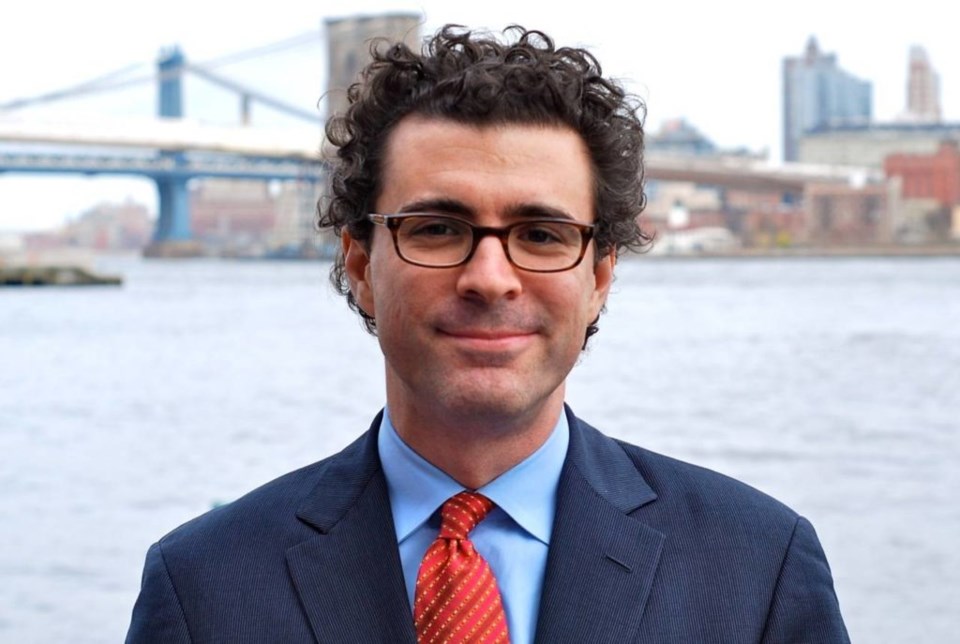
Center for an Urban Future Executive Director Jonathan Bowles said the disproportionate impact of the pandemic on the Black community spurred the report.
"As a research institution and think tank, we wanted to provide the data to really underline not just what's happening in the pandemic, but also highlight the importance of building back differently," Bowles told BK Reader.
"We need to create a more inclusive economy, not just go back to the economy we had before."
The report shows that Black New Yorkers hold a shockingly small share of jobs across many well-paying industries in the city, including the creative fields, construction, manufacturing and business services.
Black New Yorkers make up just 7 percent of the city's workforce in advertising, 7 percent in the securities industry, 8 percent in publishing, 9 percent in computer systems design, 9 percent in motion pictures and video and 13 percent in legal service.
This is despite Black New Yorkers making up 21 percent of the overall workforce in New York.
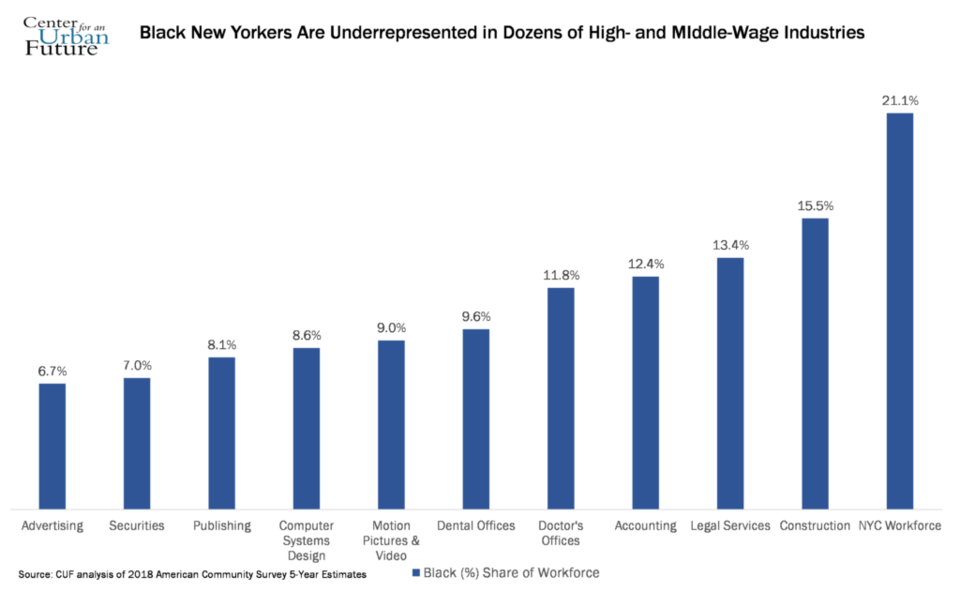
Bowles said the data showed how although the city's economy looked healthy prior to the pandemic, there were deep inequities that were persistent and partly responsible for the major differential in the city's poverty rates.
"We weren't aware of the numbers before we started and were a little shocked by the level of the gaps that exist," he said, adding they were testament of the need to rebuild a more inclusive and equitable economy going forward.
"It's alarming and what's particularly troubling is that it cuts across the entire economy: It's not just finance and tech; it's so many other sectors where Black New Yorkers are a small share of the workforce."
Industries with middle-wage jobs were also found to have low numbers of Black employees, with Black workers making up just 10 percent of dental offices, 12 percent of doctor's offices, 14 percent of food manufacturing and 16 percent of construction teams.
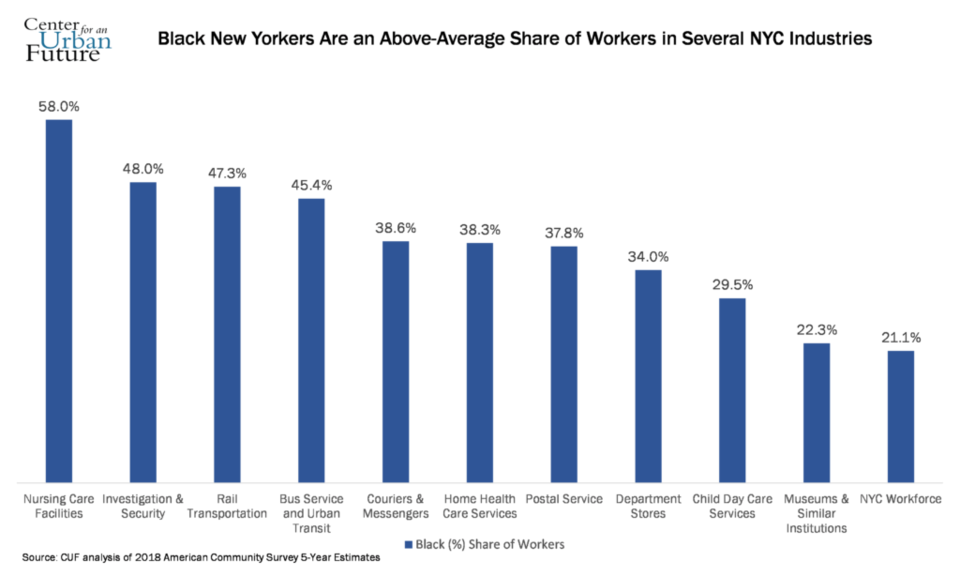
The report also highlighted the alarming wage gaps between Black and white New Yorkers across almost all industries looked into. Bowles said many New Yorkers wouldn't be surprised to hear about wage gaps in investment banking or the securities industry, but the differences cut across sectors and were just as stark in department stores and warehousing.
"There are a real deep seated problems here that aren't simple or easy to fix, but need to be addressed and have to become priorities," he said.
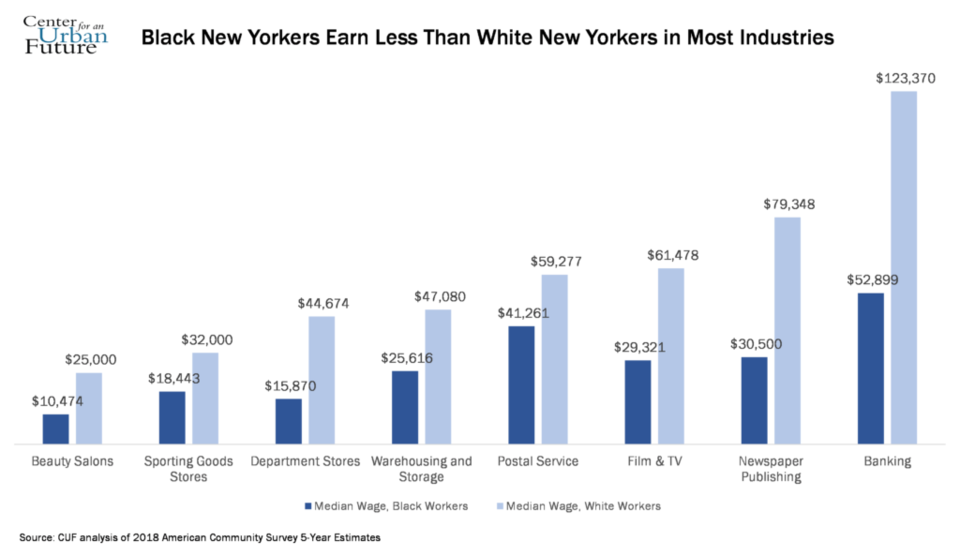
The report showed Black New Yorkers working in the city's department stores earned barely one-third of that of their white counterparts at $15,870 compared with $44,674. In warehousing and storage industry, Black workers earned an average of $25,616 a year, while white workers took home $47,080. In sporting goods stores the numbers were $18,443 compared with $32,000, in beauty salons $10,474 compared with $25,000, in newspaper publishing $30,500 compared with $79,348, in the film & tv sector $29,321 compared with $61,478, in banking $52,899 compared with $123,370. The same goes for dozens of other industries.
In just 12 of the nearly 140 industries analyzed, Black New Yorkers earned more than white New Yorkers, but 8 of those industries paid less than $39,000 a year. In 92 industries, the income gap between Black and white workers was more than $10,000, and in 33 it was less than $10,000.
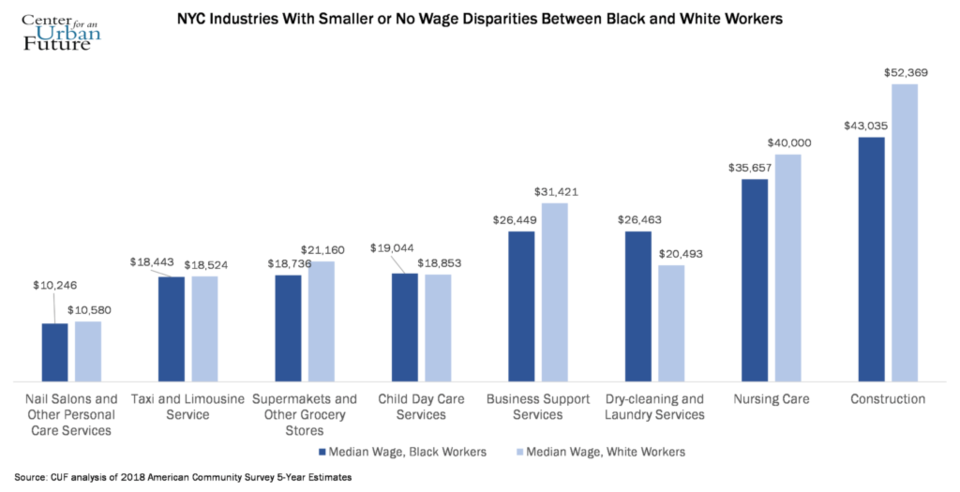
Bowles said the report was a short term data brief to spark conversation and get smart people and city leaders to start thinking about solutions, rather than an in-depth analysis with solutions.
He said the factors causing the disparities were complex and pervasive, but gaps in education and career pathways were a good place to start, adding it was clear systemic racism played a role in the disparities.
"It's hard to be optimistic at this point, frankly it's hard not to be depressed because there is so much economic pain that we are seeing across the five boroughs," Bowles said.
"But I think we're also in a moment where there's more light on the systemic inequities in our economy."
He said he was optimistic about the growing awareness, not just of unemployment caused by the pandemic, but of the serious problems in the economy to behind with.
"We're finally having a really candid discussion about the problems and I'm heartened by the fact a lot of people running for mayor and other offices in the city, they seem to get the need to create a more inclusive economy."




.png;w=120;h=114;mode=crop)